Up Next
New York-Based Painter Krista Louise Smith Brings a Gauzy, Pastel Ethereality to Her Sweeping Skyscapes
The artist's otherworldly paintings and ceramics will go on view in a solo exhibition at Carvalho Park in September.
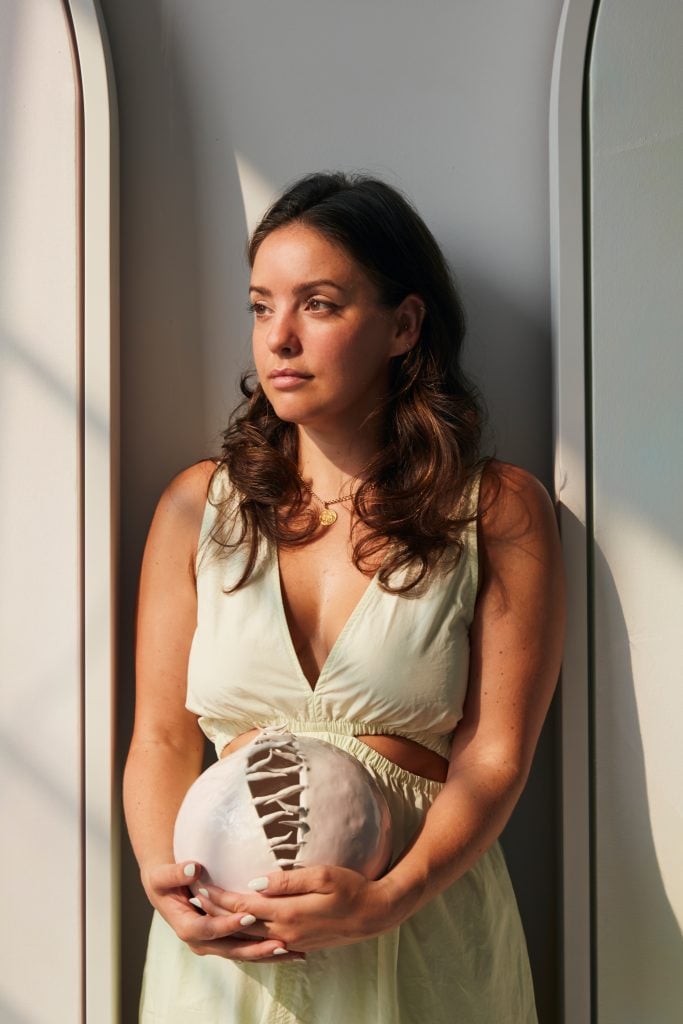
The artist's otherworldly paintings and ceramics will go on view in a solo exhibition at Carvalho Park in September.

Katie White

Neither dusk nor dawn, neither here nor there. New York artist Krista Louise Smith’s skyscapes radiate in the beauty of their unreality.
Three of the artist’s towering canvases hung against the walls of her Ridgewood, Queens, studio when I visited her earlier this summer, each glowing with thin veils of baby blue, pale pink, lilac, and icy yellow and green paints. Egg-like clouds floated through these horizon-less skies, calling to mind René Magritte’s Surrealist vistas and offering a serene otherworldliness.

Krista Louise Smith, Blue Voyage (2023). Courtesy of the artist and Carvalho Park, New York.
“Lately I’ve been working in this very fresh, sprightly, sprouty green palette. There’s something odd about a green sky but it’s also very beautiful,” said Smith. “Spring was very wet and very sudden this year. This is the first year I’ve had a window in my studio and there are these two big trees outside, which I call ‘two trees.’ They started budding especially early. At the same time, I was struggling to paint. But these little bits of greens and yellows started sprouting, just out my window, and then the paintings came naturally from there.”
Smith’s embrace of this verdant hue may also hint at her sense of recent creative flourishing. The Canadian-born artist, who is 37, has been painting in the New York art world for over a decade, often holding down multiple jobs at once so as to pursue her practice. Recently, however, Smith’s hit something of a groove. In May, a presentation of her pastel-hued skyscapes with Brooklyn’s Carvalho Park at NADA was a popular favorite. Now Smith is putting the final touches on her debut New York solo exhibition, “Everything that Holds” at Carvalho Park, running September 22–October 21.
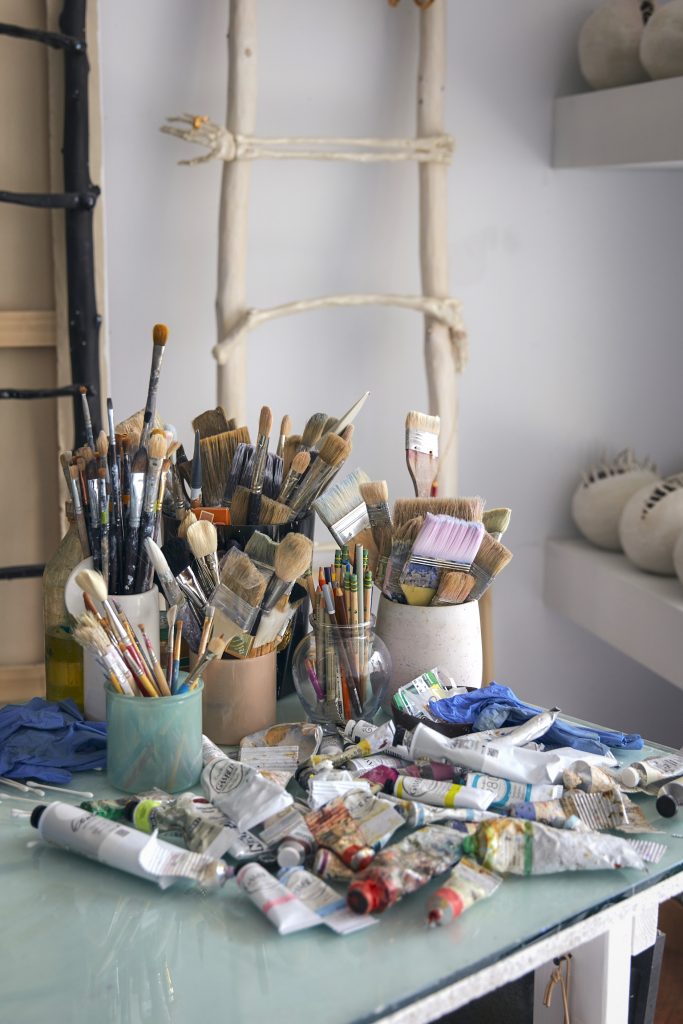
Krista Louise Smith’s tools in her studio, 2023. Courtesy of the artist.
The long-awaited show will feature a new group of soft skyscape paintings, five of which have arched, church-like peaks that echo their window-like effect. The exhibition will also feature an encompassing installation of ceramic works—the other, essential half of Smith’s practice. In this large-scale installation called Wild Flower (2023), dozens of sculptures of Venus flytraps will be positioned on a low plinth. Each roughly the size of a volleyball, these sculptures offer up menacingly cavernous and toothy grins. “They’re going to sit under the gallery’s skylight. The sculptures are very pale pink on the inside and variations of creamy white on the outside. Some will have a few gold teeth,” she explained.
Standing in Smith’s studio, with some of these sculptures around me, I had the feeling of walking through a strange and magical garden—psychedelic skies above and man-eating flowers below. It is fair to say that in this way painting and ceramics form a symbiotic dyad in Smith’s practice, bridging the transcendence of heaven with the corporeality of earth.
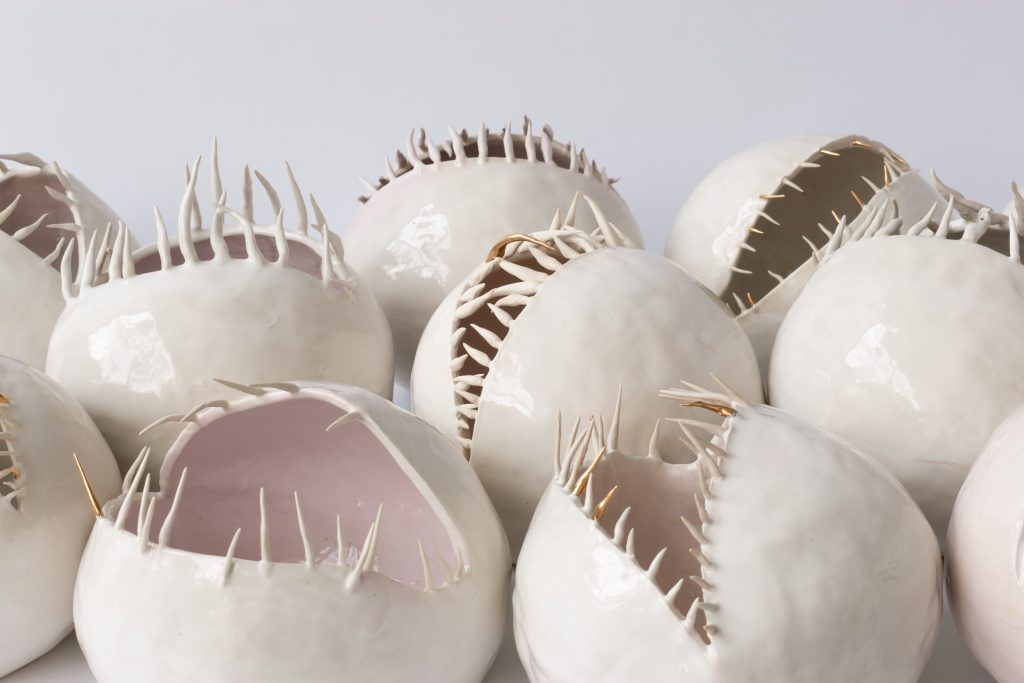
Krista Louise Smith, Wild Flower (Detail) (2023). Courtesy of the artist and Carvalho Park, New York.
Certainly, Smith’s paintings’ ethereal washes of thin colors are more like auras than any real-world skies. For the artist, these skyscapes hint at internal, emotional landscapes. At times, they are oblique self-portraits, in which the nuances and complexities of mood and feelings remain ever-shifting, ever-forming, perpetually beyond language. To create these works, Smith builds up her canvases in thin applications of colored gesso until they reach an atmospheric crescendo. These abstracted visions have given Smith a format for exploring her own emotional experiences, as a woman, without being hedged in by convention.
“When I was in graduate school, almost 12 years ago, I was painting figuratively, often nudes of women who were around my age. I found that conversations about my imagery of women circled endlessly around eroticism. It drove me insane and it felt like people were putting a narrow and suffocating reading onto the work and my experiences. I sensed it was a way for people to capitalize on the work, meanwhile, I was going off and eating noodles,” she explained, of her shift toward a more abstract, even minimalist language.
With this new visual lexicon, Smith felt free to explore experiences of womanhood and memory, particularly ancestral memory, with new freedom. Smith, whose maternal line is Italian, explores her relationships with the generations of women before her. In “Everything That Holds,” the arched peaks of some of the canvases are meant to echo Italian courtyards and gardens, which the artist perceives as entryways into subconscious memory. She shapes these canvases into custom-made and colored frames that she calls “cradles,” hinting again toward the familial.
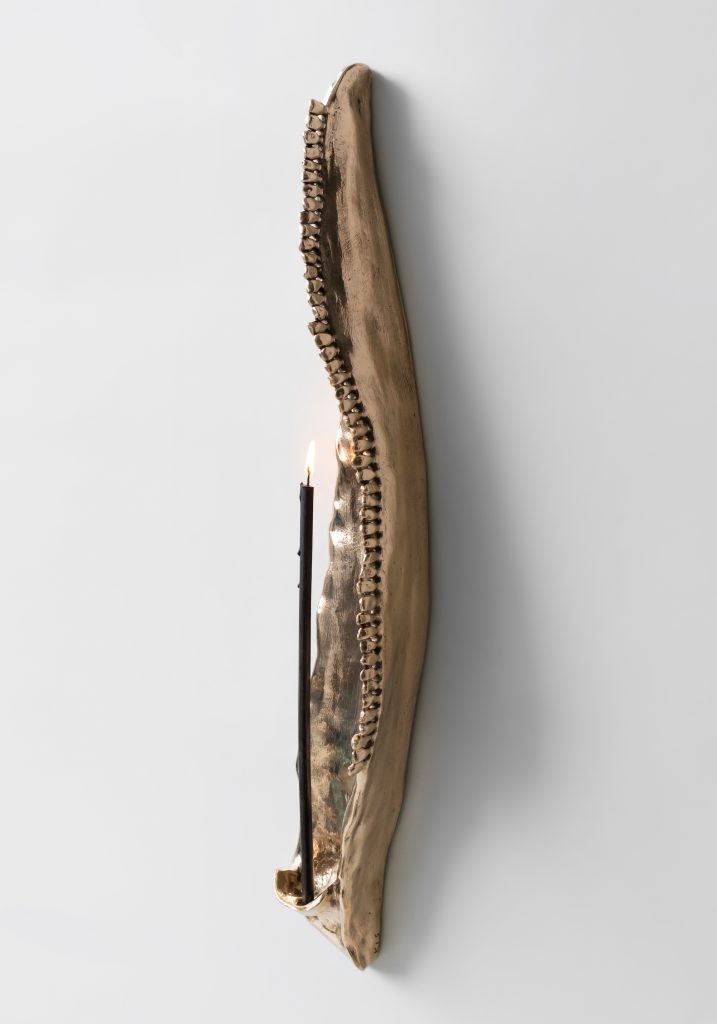
Krista Louise Smith, Flume (2023). Courtesy of the artist.
In the afternoon light of her studio, glimmers of gold can be seen. These shimmers fleck off of Smith’s delicate ceramic sculptures of bones, and teeth. She’s marked these with passages of gold leaf and sometimes added radiant gems such as opals and mother of pearl to their surfaces. In one work, Flume, dozens of teeth line a rib-like form. Each tooth is hand-built, just as with every flytrap in Wildflower. Smith began working seriously in ceramics when an arm injury left her physically unable to paint. “I’ve always liked working in mass numbers with ceramics. I was having all these issues with my arm, so I could only do small works, but the scale was still important to me, though, so I just made a lot of work,” she explained.
Her fascination with teeth and bones comes from imagery and experiences as diverse as Eve’s biblical formation from Adam’s rib to Smith’s own body. The teeth, in particular, have a fascinating origin story.
“I was living in France and a woman had befriended me, who had a baby. She was trying to get pregnant again. We were chatting and drinking wine when she pulled her mouth open and showed me this giant gap in her teeth. Two of her molars had just fallen out of her mouth,” Smith recalled. “She told me that it’s something people don’t tell you about pregnancy. The vitamins the baby requires to build itself drain from the mother’s body. In her case, that meant losing some of her teeth. It was such a guttural, vampiric image. After that, teeth kept coming back to me.”
Smith herself has a gold tooth, in which she takes pride. “I love my gold tooth so much. People used to rob graves for them. I feel like I have a little valuable treasure hidden in my mouth,” she said. But the gold is also a reference to her Italian heritage. “I’ve inherited jewelry from my Nona and aunts, relatives I’ve never even met. I was given baby jewelry. The gold feels familial, it’s our richness, but it’s also connected to loss. Most of what I’ve been gifted is because someone’s gone. I like thinking about wearing a charm as wearing someone’s ghosts.”
One new work in the exhibition, Basil, Bones, Belonging (2023), features a ceramic rib cage, pelvis, and golden arm, which Smith’s positioned on a fresh living basil plant, the scent of the herb overtaking the space. For Smith, the work conjures up memories of her grandmother, who was born in Abruzzo, Italy, and emigrated to an Italian enclave in Ontario. “My grandmother had a hard life. She only had a fifth-grade education and was dyslexic. She worked in a kitchen her whole life,” Smith recalled. “When I think of my Nona, she was someone I couldn’t really communicate with because of language, but her language was cooking. I have memories of going into her garden and picking the basil to make the tomato sauce. It seems like a through line of communication, and the basil is a poetic metaphor, a living being that connects me to her.”
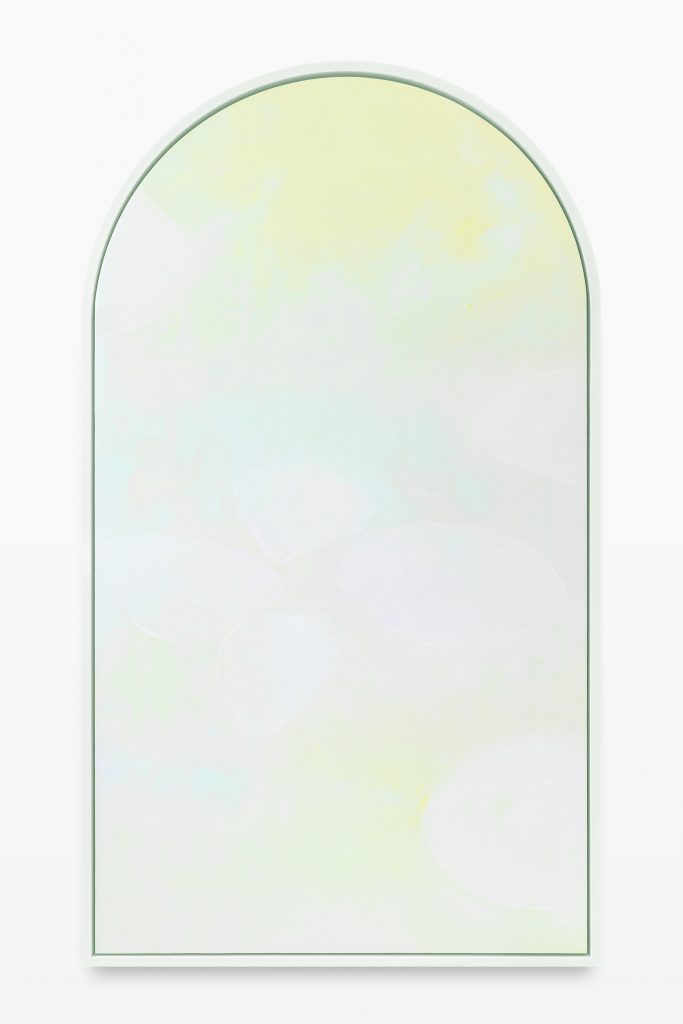
Krista Louise Smith, Petal (2023). Courtesy of the artist and Carvalho Park, New York.
In some ways, Basil, Bones, Belonging offers insights into Wildflower (2023) as well, hinting at the life that carries on from the earth. The flytraps seem then, the opposite of peaceful death, but monstrous living expressions of feminine rage and resilience. With Smith’s evocative skies above and gold graves and flowers below, she offers us a garden for both recognition and reprieve.